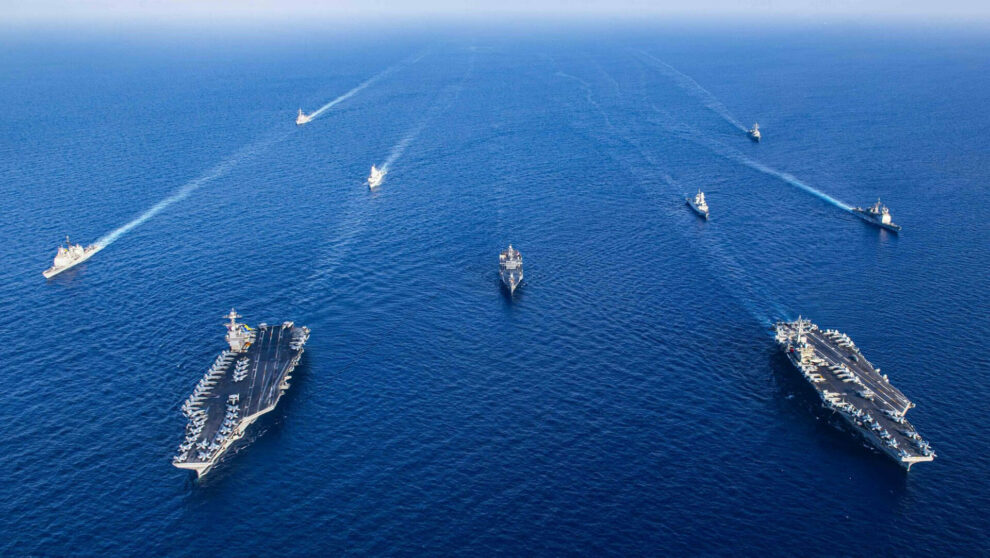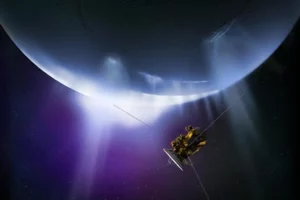The USS Florida, an Ohio-class guided-missile submarine packed to gills with Tomahawk cruise missiles and Navy SEALs, recently entered the Middle East battle zone—its appearance a warning to Israel’s main adversary, Iran. The ongoing war in Gaza has triggered a major deployment of U.S. military forces into strategic locations across the Middle East. Washington hopes that U.S. forces, including carrier battle groups, cruise missile submarines, air defense forces, and fighter jets, will deter bad actors from joining the conflict and expanding its scope.
The attack on Israel on October 7 triggered a major war between the terrorist group Hamas and the state of Israel. The conflict has triggered concerns that other groups, such as Hezbollah in Lebanon and the Houthi guerrillas in Yemen, could enter the conflict on the side of Hamas and embroil other countries, especially Yemen, Lebanon, Saudi Arabia, Egypt, and Jordan. In response, U.S. forces have flowed into many of these countries, the eastern Mediterranean, and the Red Sea to stop rocket and missile attacks and prevent the need for targeted countries to retaliate.
So far, the American strategy seems to be working. Hezbollah and the Houthis have fired missiles in support of Hamas but have refrained from joining the conflict outright, allowing other countries in the region to stay out of the fighting. At the same time, if the deterrence provided by U.S. forces fails, it does risk the possibility th
Navy and Marines
The U.S. Navy currently operates two carrier strike groups in the Middle East region. Carrier Strike Group 12 includes the new carrier USS Gerald R. Ford with four squadrons of Super Hornet strike fighters. The strike group is rounded out by the guided missile cruiser USS Normandy and destroyers Ramage, McFaul, and Thomas Hudner.
Carrier Strike Group 2, now in the Red Sea, includes USS Eisenhower with another four Super Hornet squadrons, the cruiser Philippine Sea, destroyers Graveley and Mason, and the Italian Navy frigate Virginio Fasan. Typically, each carrier strike group is accompanied by a nuclear-powered attack submarine that screens for underwater threats and also carries land-attack cruise missiles.
In addition to the two carriers, the amphibious assault ship USS Bataan, along with USS Carter Hall and USS Mesa Verde, are operating in the Red Sea. Embarked upon the three ships is the 26th Marine Expeditionary Unit, an infantry battalion reinforced with attack helicopters, MV-22 Osprey tilt-rotor aircraft, and AV-8B Harrier attack jets.
On November 5, U.S. Central Command, responsible for Israel and the broader Middle East, tweeted a photo of an Ohio-class guided-missile submarine passing through the Suez Canal. The name of the submarine was not disclosed, however it is believed to be the USS Florida, one of four Ohi0-class submarines modified to embark up to 154 Tomahawk land attack cruise missiles. The submarine is also equipped with a dry dock shelter (DDS) behind the sail. The DDS is a device that allows U.S. Navy SEALs to enter and exit the submarine underwater, both on their own and using underwater transport vehicles.
Air Force
The U.S. Air Force moved fighter jets to the Middle East early in the conflict. A-10 Thunderbolt II attack jets from Arizona and Georgia flew to unspecified locations in the region, likely Al Dhafra in the United Arab Emirates or Al Udeid in Qatar. F-15E Strike Eagles and F-16 Fighting Falcons were also deployed. The Air Force has been mum on how many of each type of aircraft has been rushed to the theater, what their missions are, and how long they will stay.
On October 27, Air Force F-15 and F-16 fighters struck two locations in Syria that were home to Iranian-backed groups conducting attacks on American troops. The drone and rocket attacks, linked to the Iranian Revolutionary Guards Corps, injured at least two dozen American troops based in Iraq and Syria. The air strike failed to stop the attacks. The Department of Defense said on November 17 that there have been 58 attacks on U.S. military bases in Iraq and Syria since October 17, though none caused any serious damage or injuries.
In addition to fighters, Air Force transports are flying in military supplies to Israel, and aerial refueling tankers, including KC-135R Stratotankers, are supporting Air Force aircraft throughout the theater. An RC-135V strategic reconnaissance aircraft, call sign HOMER42, has been flying surveillance missions off the coast of Israel, likely monitoring communications of Hamas, Hezbollah, and other regional actors.
The Air Force has also conducted several missions since November 5 throughout the Middle East with the B-1B Lancer, a multi-mission, supersonic bomber. The Pentagon says, though, that the missions were planned before the Gaza conflict started, as reported by Business Insider.
The only U.S. forces operating directly above Gaza are MQ-9 Reaper drones. The drones are reportedly helping search for Israeli and American hostages held by Hamas and are not armed.
Army
The U.S. Army has sent mostly air defense artillery to the Middle East, in order to stop rocket and missile attacks.
On October 25, FDD cited a Wall Street Journal report that a THAAD battery was destined for Saudi Arabia. THAAD, which stands for Terminal High Altitude Area Defense, is a missile system designed to shoot down Iranian ballistic missiles fielded by both Iran and Yemen’s Houthi rebels. The Journal also reported that Patriot batteries were being sent to Saudi Arabia, Kuwait, Jordan, Iraq, Qatar, and the United Arab Emirates. The Patriot missile system is a more versatile platform capable of defending against aircraft, cruise missiles, ballistic missiles, and drones.
The U.S. Army might be the only service with actual personnel operating on the ground. According to the New York Times, “several dozen” U.S. commandos were deployed to Israel to help search for the more than 200 civilian hostages taken by Hamas, including U.S. citizens. These are likely drawn from the Intelligence Support Activity (ISA), an Army unit with the mission of providing reconnaissance and intelligence in combat zones. ISA is part of Joint Special Operations Command, which includes Delta Force, Seal Team Six, and the Air Force’s 24th Special Tactics Squadron.
The Takeaway
In all, around 45,400 U.S. troops and contractors are currently stationed across the Middle East. Since the conflict began, 1,200 troops have been deployed to the region as of November 7.
At this point, the only progress that can reasonably be accomplished in the Gaza War is to prevent it from growing even worse. One of the most understated but important missions of American military power is to stabilize crises with a flood of firepower. The United States has sent military forces into the Middle East as only the United States can, quickly becoming the 500-pound gorilla in the room. Nobody knows what the gorilla intends, except it is allied with Israel, and that is so far dissuading others from jumping feet first into the war. If America can’t make peace, it can at least prevent the war from spreading.
Source : popularmechanics.com















